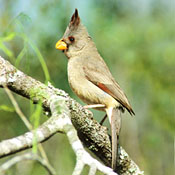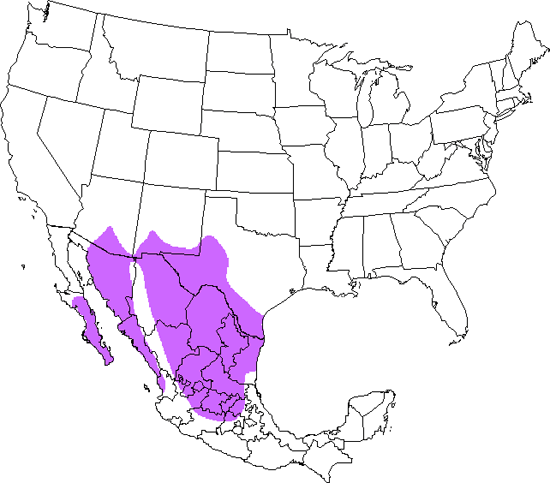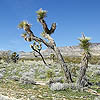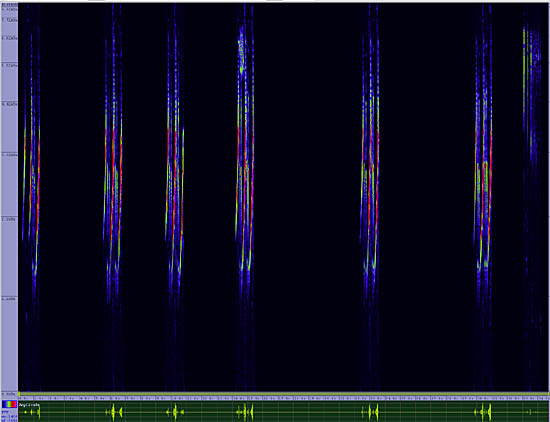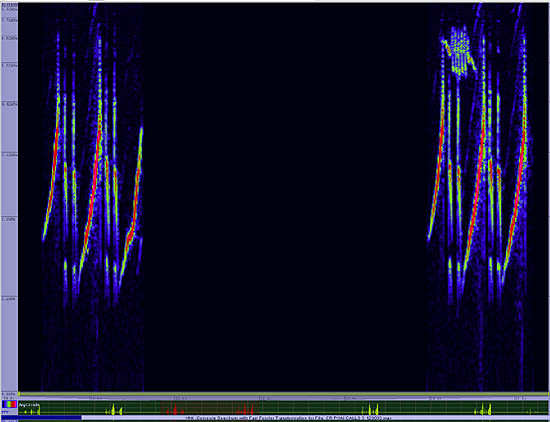Pyrrhuloxia
Cardinalis sinuatus

Perching
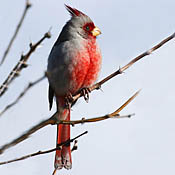
Length: 9 in. (22 cm )
Closely related to and resembling the Northern Cardinal, the Pyrrhuloxia is best distinguished by its parrot-shaped bill and more subtle color patterns. It is restricted to desert areas with tall bushes and scattered mesquite trees. This species feeds on the ground and low in the vegetation on insects, fruits and seeds. In the winter small family groups join together to form flocks. The grass and twig nest is placed in a low bush or dense patch of vegetation.
The four-digit banding code is PYRR.
Bibliographic details:
- Article: Pyrrhuloxia
- Author(s): Dr. Biology
- Publisher: Arizona State University School of Life Sciences Ask A Biologist
- Site name: ASU - Ask A Biologist
- Date published: 13 Jul, 2017
- Date accessed: 8 October, 2025
- Link: https://askabiologist.asu.edu/activities/bird/pyrrhuloxia
APA Style
Dr. Biology. (Thu, 07/13/2017 - 15:37). Pyrrhuloxia. ASU - Ask A Biologist. Retrieved from https://askabiologist.asu.edu/activities/bird/pyrrhuloxia
Chicago Manual of Style
Dr. Biology. "Pyrrhuloxia". ASU - Ask A Biologist. 13 Jul 2017. https://askabiologist.asu.edu/activities/bird/pyrrhuloxia
MLA 2017 Style
Dr. Biology. "Pyrrhuloxia". ASU - Ask A Biologist. 13 Jul 2017. ASU - Ask A Biologist, Web. https://askabiologist.asu.edu/activities/bird/pyrrhuloxia
Be Part of
Ask A Biologist
By volunteering, or simply sending us feedback on the site. Scientists, teachers, writers, illustrators, and translators are all important to the program. If you are interested in helping with the website we have a Volunteers page to get the process started.



